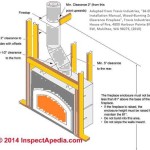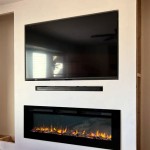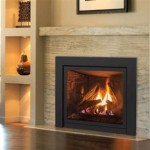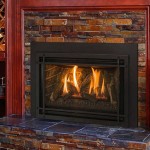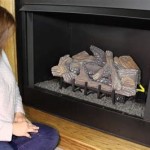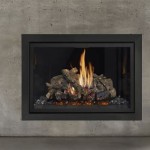Turning Off Your Gas Fireplace Pilot Light in Summer: A Comprehensive Guide
Gas fireplaces offer a convenient and aesthetically pleasing way to add warmth to a home. However, during the warmer months, when supplemental heating is unnecessary, the continuous burning of the pilot light can contribute to higher energy bills and potentially increase indoor temperatures. Understanding the implications of a constantly burning pilot light and the process of safely extinguishing it is crucial for efficient home management.
This article explores the reasons behind turning off a gas fireplace pilot light during the summer season, details the step-by-step procedure for doing so, and addresses common concerns associated with this practice. It emphasizes safety precautions and provides insights into troubleshooting potential issues that may arise when relighting the pilot in the fall.
Understanding the Rationale for Extinguishing the Pilot Light
The pilot light in a gas fireplace serves as a small, continuous flame that ignites the main burner when heat is desired. While the flame is relatively small, its constant operation consumes natural gas or propane. This consumption, though minimal on a daily basis, accumulates over the entire summer period, leading to a noticeable increase in energy bills. In regions with high energy costs, the savings from turning off the pilot light can be significant.
Furthermore, the continuous burning of the pilot light generates a small amount of heat. While this heat output may be negligible during the winter months when heating is required, it can contribute to increased indoor temperatures during the summer. This added heat places a greater burden on air conditioning systems, further increasing energy consumption and costs. Turning off the pilot light can help maintain a cooler indoor environment, reducing the strain on cooling systems.
In addition to energy savings and reduced heat generation, extinguishing the pilot light can also contribute to improved indoor air quality. While gas fireplaces are generally safe, the combustion process, even on a small scale, releases trace amounts of pollutants into the air. Turning off the pilot light eliminates this source of emissions, potentially improving the overall air quality within the home. This is particularly beneficial for individuals with respiratory sensitivities or allergies.
Step-by-Step Procedure for Safely Turning Off the Pilot Light
Before attempting to extinguish the pilot light, it is imperative to locate the gas valve and familiarize oneself with the components of the fireplace. The gas valve is typically located near the fireplace, either behind an access panel or within the firebox itself. The valve will have an "on," "off," and "pilot" setting clearly marked. Identifying these settings is crucial for safely and effectively turning off the pilot light.
The following steps outline the process for safely extinguishing the pilot light:
- Locate the gas valve.
- Turn the gas valve knob to the "pilot" setting. This position allows gas to flow only to the pilot light.
- Press and hold the gas valve knob in the "pilot" position. This action engages the safety mechanism that allows gas to flow to the pilot light.
- While holding the knob in, use a long-handled lighter or match to extinguish the pilot light. Some units may have a built-in igniter that can be used instead. Observe the flame carefully to ensure it is completely extinguished.
- Continue holding the gas valve knob in for approximately 20-30 seconds after the flame is extinguished. This allows the thermocouple (a safety device that detects the presence of a pilot flame) to cool down.
- Release the gas valve knob. If the flame is completely extinguished and the thermocouple has cooled sufficiently, the gas valve should remain closed. If the pilot light reignites when the knob is released, repeat steps 2-6, ensuring the flame is fully extinguished and the thermocouple has cooled.
- Turn the gas valve knob to the "off" position. This completely shuts off the gas supply to the fireplace.
After completing these steps, it is advisable to allow the fireplace to sit undisturbed for several hours to ensure that all residual gas has dissipated. This precaution minimizes the risk of gas buildup and potential hazards.
Addressing Common Concerns and Troubleshooting Potential Issues
One common concern associated with turning off the pilot light is the potential difficulty in relighting it in the fall. Over time, dust and debris can accumulate in the pilot light orifice, potentially obstructing the flow of gas and making it difficult to ignite. To mitigate this risk, it is recommended to clean the pilot light assembly before attempting to relight it.
Cleaning the pilot light assembly typically involves removing the access panel and carefully using a small brush or compressed air to remove any visible dust or debris. Consult the fireplace manufacturer's instructions for specific cleaning procedures. Avoid using sharp objects or harsh chemicals, as these can damage the delicate components of the pilot light assembly.
Another potential issue is the failure of the thermocouple. The thermocouple is a safety device that senses the presence of the pilot flame and allows the main gas valve to open. If the thermocouple is faulty, it will not detect the pilot flame, preventing the main burner from igniting. A faulty thermocouple may require replacement by a qualified technician.
When relighting the pilot light in the fall, it is essential to follow the manufacturer's instructions carefully. The procedure is typically the reverse of the extinguishing process. If the pilot light fails to ignite after several attempts, or if a strong odor of gas is detected, immediately turn off the gas supply and contact a qualified gas appliance technician. Do not attempt to troubleshoot the problem without proper training and experience.
It is also important to remember to check the fireplace vent. Birds and other small animals sometimes build nests in the vent during the summer months. Blockages in the vent can lead to carbon monoxide buildup, a potentially deadly gas. Before relighting the pilot light, ensure that the vent is clear of any obstructions.
Regular maintenance is crucial for the safe and efficient operation of a gas fireplace. Schedule an annual inspection by a qualified technician to ensure that all components are functioning correctly and to identify any potential problems before they escalate. This proactive approach can help prevent costly repairs and ensure the safety of your home and family.
Finally, always prioritize safety when working with gas appliances. If there is any doubt about the proper procedure for turning off or relighting the pilot light, consult the fireplace manufacturer's instructions or seek professional assistance. Attempting to perform repairs or modifications without proper training can be dangerous and may void the warranty.
By understanding the rationale for extinguishing the pilot light, following the proper procedures, and addressing potential issues proactively, homeowners can effectively manage their gas fireplaces and optimize energy consumption during the summer months. This practice not only saves money but also contributes to a more comfortable and environmentally friendly living environment.
In addition to the points mentioned above, it is always a good idea to consult with a qualified technician before turning off the pilot light for an extended period, especially if the fireplace is relatively new or has complex features. A technician can provide specific guidance based on the make and model of the fireplace and address any unique concerns.
Furthermore, documenting that the pilot light was turned off and the date it was turned off can be helpful to remember when it occurred. This can be useful to compare energy bills from year to year and to serve as a reminder when it is time to relight the pilot light in the fall.
Ultimately, the decision to turn off the gas fireplace pilot light during the summer is a personal one that depends on individual circumstances and preferences. However, by carefully considering the factors outlined in this article, homeowners can make an informed decision and implement a plan that aligns with their energy-saving goals and safety priorities.

Should You Turn Off The Pilot On Your Fireplace This Summer

Should I Turn The Pilot Light Off During Summer

Summer Gas Fireplace Settings Weiss Johnson Fireplaces

Should I Turn Off The Pilot Light In Spring B C Comfort Fireplace Hvac Repair Installation

Should You Turn Off The Pilot On Your Fireplace This Summer

Turn The Pilot Light Off During Summer Gas Fireplace Tips

Does The Pilot Light Need To Be Turned Off In Summer We Love Fire

Save Money And Turn Off Your Pilot Light For The Summer

Penny Pinching Tip Turn The Pilot Off On Your Gas Fireplace During Summer And Save One Hundred Dollars A Month

How To Shut Off Gas Fireplace With Standing Pilot
Related Posts

